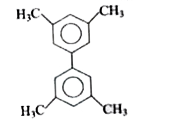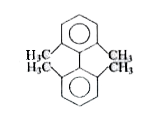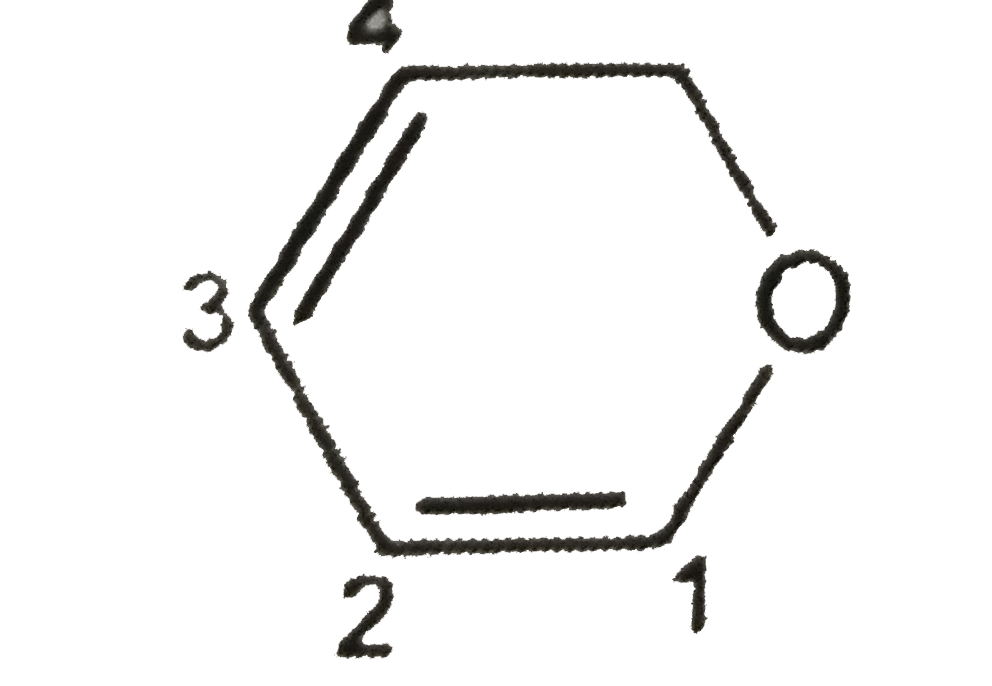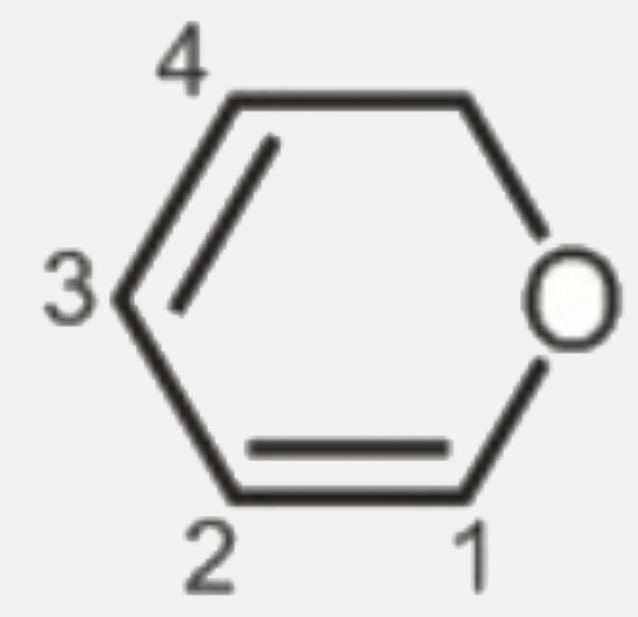In which of the following molecules, electron density in ring is minimum ?




The correct Answer is:D
To determine which molecule has the minimum π-electron density in the ring, we need to analyze the substituents attached to the aromatic rings in the given options. The substituents can either donate or withdraw electron density through their mesomeric effects.
1. Identify the Substituents: Look at each of the given molecules and identify the substituents attached to the aromatic ring. Common substituents include -NO2 (nitro), -NH2 (amino), and -CH3 (methyl).
2. Determine the Effect of Each Substituent:
- -NO2 (Nitro Group): This group exhibits a strong -M (minus mesomeric) effect, meaning it withdraws electron density from the aromatic ring.
- -NH2 (Amino Group): This group exhibits a +M (plus mesomeric) effect, meaning it donates electron density to the aromatic ring.
- -CH3 (Methyl Group): This group also exhibits a +I (inductive) effect, which slightly donates electron density but is less significant than the mesomeric effects.
3. Analyze Each Option:
- Option 1: Contains one -NO2 group (withdraws electron density) and one -CH3 group (donates electron density). The overall effect is a slight decrease in electron density.
- Option 2: Contains one -NO2 group (withdraws electron density) and one -NH2 group (donates electron density). The -NH2 group partially compensates for the -NO2 group, resulting in moderate electron density.
- Option 3: Contains one -NO2 group (withdraws electron density) and one -NH2 group (donates electron density). Similar to Option 2, the effects are balanced, but the presence of the -NO2 group still reduces electron density.
- Option 4: Contains two -NO2 groups. Both groups withdraw electron density from the aromatic ring, leading to a significant decrease in π-electron density.
4. Conclusion: Among all options, Option 4 has the maximum number of -NO2 groups, which results in the minimum π-electron density in the ring due to the strong electron-withdrawing effect of both nitro groups.
Final Answer:
The molecule with the minimum π-electron density in the ring is Option 4.
- -NO2 (Nitro Group): This group exhibits a strong -M (minus mesomeric) effect, meaning it withdraws electron density from the aromatic ring.
- -NH2 (Amino Group): This group exhibits a +M (plus mesomeric) effect, meaning it donates electron density to the aromatic ring.
- -CH3 (Methyl Group): This group also exhibits a +I (inductive) effect, which slightly donates electron density but is less significant than the mesomeric effects.
- Option 1: Contains one -NO2 group (withdraws electron density) and one -CH3 group (donates electron density). The overall effect is a slight decrease in electron density.
- Option 2: Contains one -NO2 group (withdraws electron density) and one -NH2 group (donates electron density). The -NH2 group partially compensates for the -NO2 group, resulting in moderate electron density.
- Option 3: Contains one -NO2 group (withdraws electron density) and one -NH2 group (donates electron density). Similar to Option 2, the effects are balanced, but the presence of the -NO2 group still reduces electron density.
- Option 4: Contains two -NO2 groups. Both groups withdraw electron density from the aromatic ring, leading to a significant decrease in π-electron density.
The molecule with the minimum π-electron density in the ring is Option 4.
Similar Questions
Knowledge Check
In which of the following molecules π−electron density in ring is maximum?
A B
B C
C D
D
In which of the following molecules both phenyl rings are coplanar>?
A B
B C
C D
D
Which of the following is an odd electron molecule?
View SolutionWhich of the following is an electron deficient molecule?
View SolutionWhich of the following is electron deficient molecule ?
View SolutionWhich one of the following molecules contains no π - bond ?
View SolutionWhich one of the following molecules contains no π - bond ?
View SolutionWhich one of the following molecules contains no π - bond ?
View Solution


